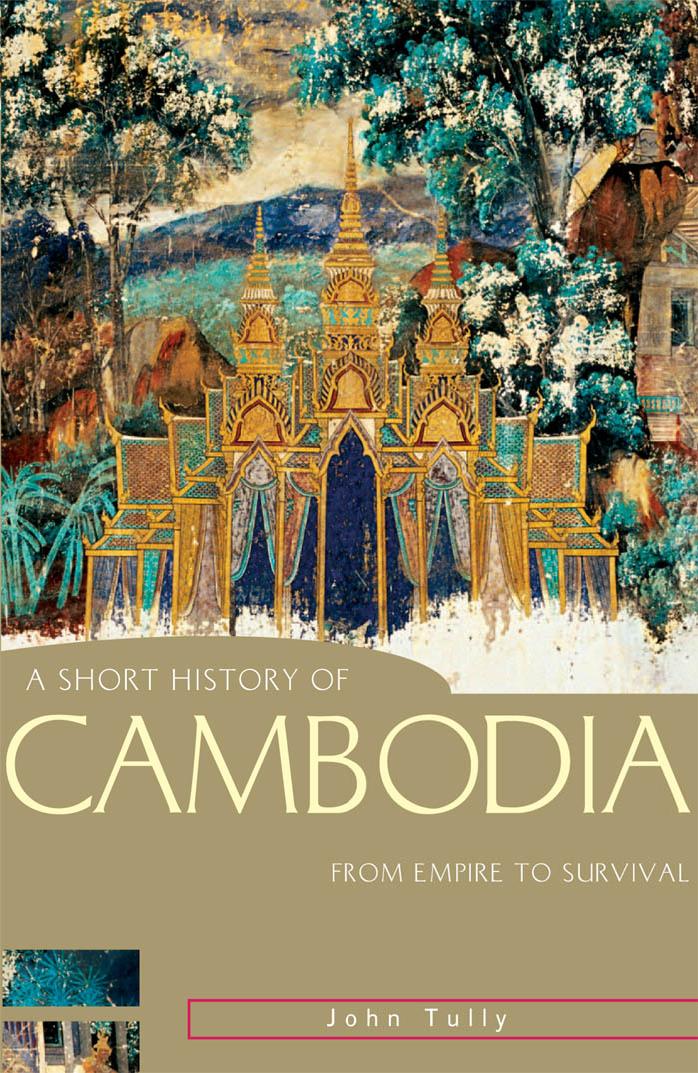A Short History of Cambodia by John Tully

Author:John Tully
Language: eng
Format: epub, pdf
Tags: ebook, book
ISBN: 9781741158571
Publisher: Allen & Unwin Pty Ltd
Published: 2010-05-25T16:00:00+00:00
Geneva and Cambodian sovereignty
The Geneva Conference opened on 8 May 1954 with delegations from the United States, France, Britain, the USSR, the People’s Republic of China (PRC), Cambodia, Laos, the (communist) Democratic Republic of Vietnam (DRV), and its anti-communist rival from the South, the Republic of Vietnam (RVN). The main item of business was to negotiate settlements of the Vietnamese and Korean conflicts. Cambodia was a tangential issue in a conference dominated by the superpowers and their big power allies, but the Cambodian delegates Nong Kimny, Sam Sary and Tep Phan, instructed by Sihanouk, left their modest mark on history. Very quickly, they were on their feet objecting to a proposal from the DRV’s Pham Van Dong (backed by the PRC and the USSR) to seat representatives of the communist-dominated ‘resistance movements’ from Laos and Cambodia (including the Khmer People’s Liberation Army). When it became clear that the issue was a sticking point for Sihanouk’s delegates, the PRC’s Zhou Enlai and the USSR’s Molotov persuaded Pham Van Dong to drop the demand—an early victory for the Khmer delegates.
By mid-July, the delegates had come to an agreement on most issues relating to Indochina.4 However, Sihanouk was unhappy with the final proposals, for although they guaranteed his country’s neutrality they fell short of ensuring the complete withdrawal of the Viet Minh and disarming the KPLA, and also forbade Cambodia from entering into military alliances with other countries. After weary late-night debates, the Russian and Chinese delegates pressured the Vietnamese communists to bow to Cambodia’s terms and Cambodia signed the final agreement on 21 July 1954. It was a significant triumph for Sihanouk’s delegates, who had fought stubbornly for their country’s sovereign rights.
Cambodia’s neutrality was reinforced shortly afterwards when Sihanouk came to an understanding with the PRC and the DRV, both of which guaranteed to respect Khmer sovereignty in return for Sihanouk’s promise that no US military bases would be set up on Cambodian soil. The agreement displeased the US, which initially threatened to withhold all aid from Sihanouk’s regime. Sihanouk did not back down and after 1955 Washington changed tack and promised large amounts of military assistance and also pledged its support for Cambodian neutrality and sovereignty. In the same year, Sihanouk attended the Bandung Conference of non-aligned nations, where he met with such luminaries as Jawaharlal Nehru, Ahmed Sukarno and Josip Tito, and was lionised as a leader of the anti-colonial struggle of Third World people. The communist bloc countries also began to provide Cambodia with economic aid on more favourable terms than those of the Americans and other capitalist countries (although US aid was consistently larger than that of all of the other donors combined).
Sihanouk consolidates power
Sihanouk had come to sovereign power in 1953 with a fund of political goodwill. His achievements on the international stage enhanced his prestige among his subjects and undercut the Democrats and the procommunist Pracheachon. He had steered his country to independence and tacked skilfully to ensure that it would be maintained on course in the face of gale force international winds.
Download
This site does not store any files on its server. We only index and link to content provided by other sites. Please contact the content providers to delete copyright contents if any and email us, we'll remove relevant links or contents immediately.
| Africa | Americas |
| Arctic & Antarctica | Asia |
| Australia & Oceania | Europe |
| Middle East | Russia |
| United States | World |
| Ancient Civilizations | Military |
| Historical Study & Educational Resources |
The Story of China by Michael Wood(927)
Mr. Selden's Map of China by Timothy Brook(774)
Philippines--Culture Smart! by Culture Smart!(669)
Heroic Hindu Resistance To Muslim Invaders (636 AD to 1206 AD) by Sita Ram Goel(655)
Akbar: The Great Mughal by Ira Mukhoty(650)
The Meaning of India by Raja Rao(631)
Vedic Physics: Scientific Origin of Hinduism by Raja Ram Mohan Roy(624)
Food of India by unknow(616)
Banaras by Diana L. Eck(613)
India--Culture Smart! by Becky Stephen(602)
China Unbound by Joanna Chiu(601)
First Platoon by Annie Jacobsen(599)
Mao's Great Famine: The History of China's Most Devastating Catastrophe, 1958-1962 by Frank Dikötter(594)
North of South by Shiva Naipaul(588)
Insurgency and Counterinsurgency by Jeremy Black(564)
How to Be a Modern Samurai by Antony Cummins(562)
A History of Japan by R.H.P. Mason & J.G. Caiger(561)
The Genius of China: 3,000 Years of Science, Discovery, and Invention by Robert Temple(560)
The Digital Silk Road by Jonathan E. Hillman(549)
